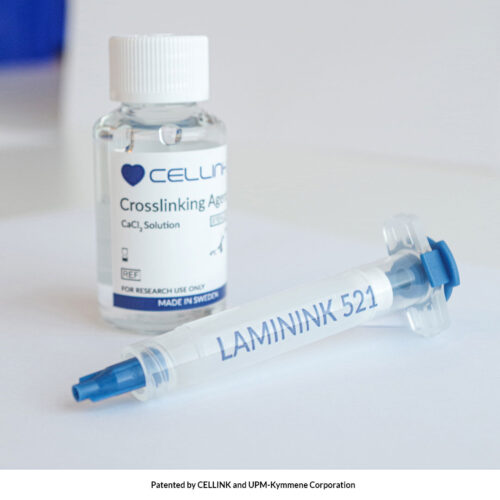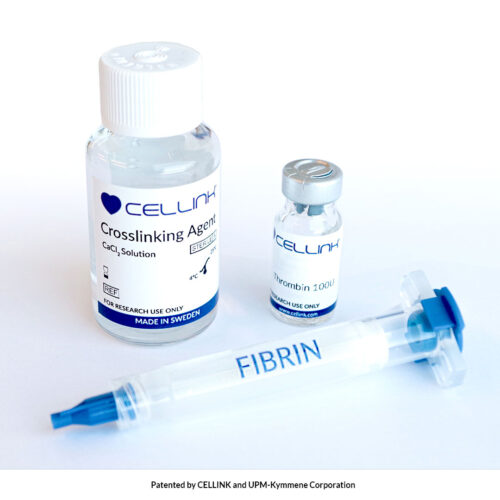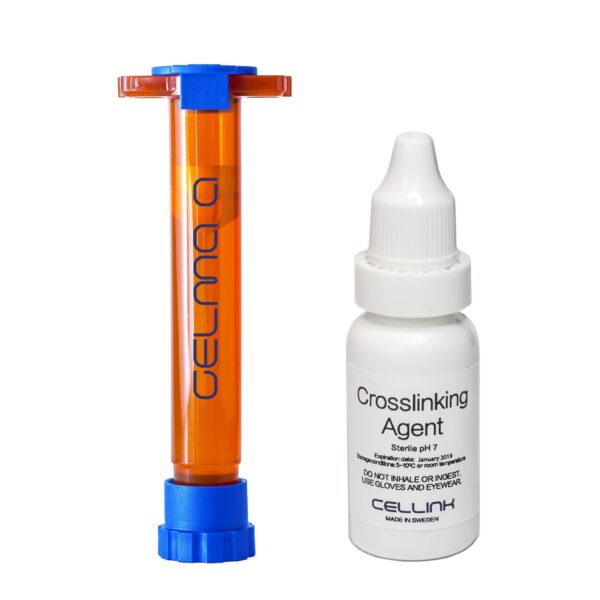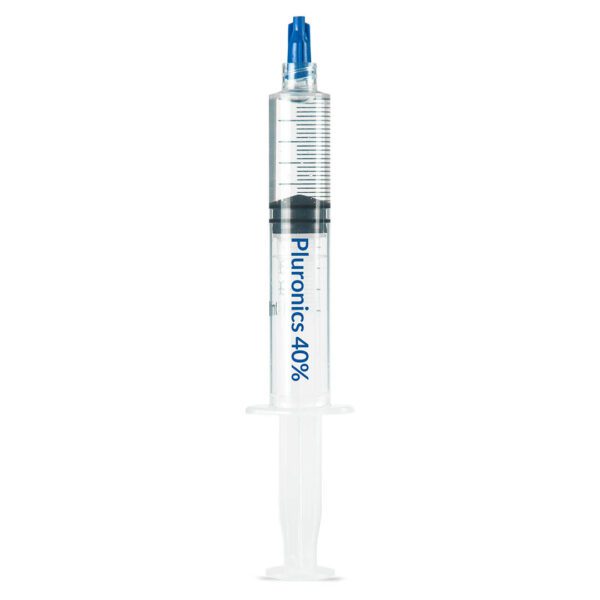Description
- Shelf life: minimum 6 months.
- Storage conditions: 2-10°C, do not freeze.
- Includes CaCl2 Crosslinking Agent.
- For research use only. Not for human use.
Specifications
| Appearance | White semi-translucent gel |
| Sterility | Sterile |
| pH | 6.5-7.4 |
| Viscosity | 2.6-7.5 kPa∙s at 0.01 s-1, 1.0-1.9 Pa∙s at 200 s-1 |
Publications
The latest publications using CELLINK Bioink.
Development of 3D-bioprinted colitis-mimicking model to assess epithelial barrier function using albumin nano-encapsulated anti-inflammatory drugs
Almutary, A. G; Alnuqaydan, A. M; Almatroodi, S. A; Bakshi, H. A; Chellappan, D. K; Tambuwala, M. M. Biomimetics (Basel, Switzerland), 8(1), 41. (2023).
https://doi.org/10.3390/biomimetics8010041
A New Solution for In-Situ Monitoring of Extrusion-Based Bioprinting Via Infrared Imaging
Colosimo, B; Moscatelli, D; Gugliandolo, S. SSRN. (2023).
https://dx.doi.org/10.2139/ssrn.4365526
Non-destructive mechanical assessment for optimization of 3D bioprinted soft tissue scaffold
Godau, B; Stefanek, E; Gharaie, S; Amereh, M; Pagan, E; Marvdashti, Z; Libert-Scott, E; Ahadian, S; Akbari, M. iScience, 25(5), 104251. (2022).
http://dx.doi.org/10.1016/j.isci.2022.104251
Patients’ Stem Cells Differentiation in a 3D Environment as a Promising Experimental Tool for the Study of Amyotrophic Lateral Sclerosis
Scarian, E; Bordoni, M; Fantini, V; Jacchetti, E; Raimondi, MT; Diamanti, L; Carelli, S; Cereda, C; Pansarasa, O. International Journal of Molecular Sciences, 23(10), 5344. (2022)
https://doi.org/10.3390/ijms23105344
A 3D Bioprinted Human Meniscus Shape Enriched with Mesenchymal Cells
Hurmuz, M; Ionac, M; Tatu, C; Puscasiu, D; Miu, C; Galatanu, S; Tatu, F. Applied Sciences (Basel, Switzerland), 11(24), 11733. (2021).
https://www.mdpi.com/2076-3417/11/24/11733













